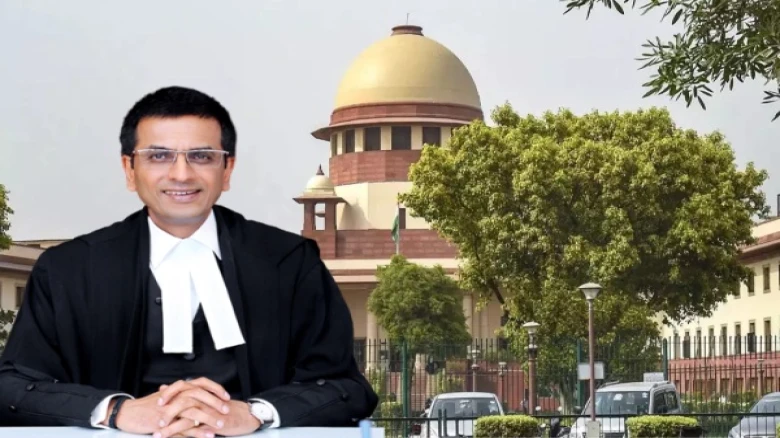The Supreme Court joined the platform on Thursday, and the figures indicated numerous hopeful current patterns of case disposition...
Digital Desk: Under the leadership of Chief Justice DY Chandrachud, the Supreme Court achieved an unimaginable 95.7% disposal rate in 2023, with its benches issuing final verdicts on 72,328 cases to date, compared to 75,554 cases initiated in the top court during the same period.
The Supreme Court joined the all-India judicial data transparency portal National Judicial Data Grid (NJDG) on Thursday, eight years after it was established, and the statistics showed multiple encouraging current trends of case disposition as well as some problems of past pendency in the highest court.
PM Narendra Modi tweeted about the event, writing, "Laudatory step by the Supreme Court and CJI DY Chandrachud Ji. This use of technology will increase openness and improve our country's legal system."
The NJDG, which was established in 2015, delivers information on cases pending in high courts to taluka-level courts in each state.
The SC managed to have a dismal overall success percentage for plaintiffs in 2023 in both civil and criminal proceedings. Only 17% of petitions were granted in civil cases, while 22% were disposed of (which may include partial relief) and 61% were dismissed. The SC has dismissed 64.4% of criminal cases, allowed 13.2%, and resolved the other cases.
Though the cumulative success rate of civil and criminal petitions in the Supreme Court remained a dismal 15.6%, the trend of increased filings in the Supreme Court remained strong, showing the public's faith in the court.
As of present, there are 80,344 pending cases, approximately 16,000 of which have been filed but have yet to be registered as cases by the Supreme Court.
CJI Chandrachud called the SC's placement in NJDG a "historic event."
However, other cases have been buried in the court's history. According to the NJDG dashboard for the Supreme Court, two writ petitions filed in 1982 are still pending.
With the yearly workload increasing over the decades, the Supreme Court's concentration has been on adjudicating issues that may be settled by two- or three-judge benches.
Despite recent attempts to hear cases by five-judge benches, there are currently 306 such cases pending disposition.
Furthermore, 21 cases are pending the formation of seven-judge benches and 135 more are awaiting the formation of nine-judge benches.

Leave A Comment